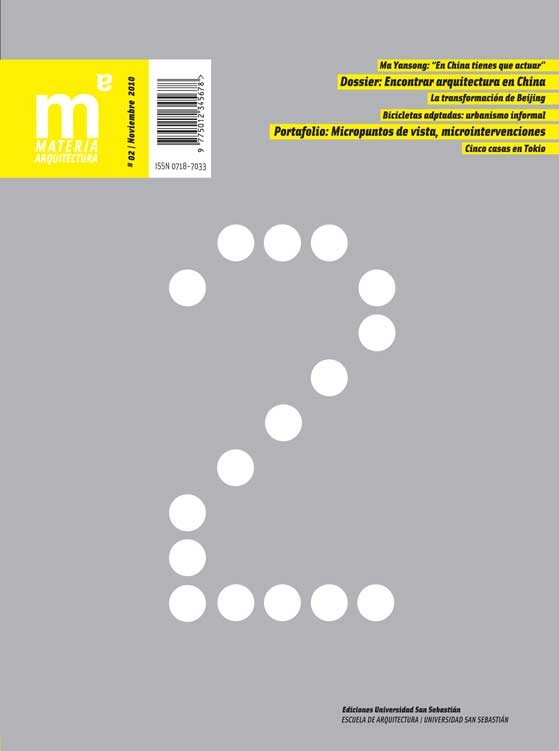Creation of community and identity in the new towns of Shanghai
Article Sidebar
Keywords:
Main Article Content
Abstract
The contemporary concept of “new town” is based on nuclei that function independently. Analogous to the Garden City of Ebenezer Howard (1898) and to the soviet planning, these new towns should be self-sufficient. Although most of the new towns and satellite cities in the world prove that a planned city needs a long time to acquire life, recent examples in Shanghai promise to surpass occidental cases and become living communities. This is a product of the especial combination of state planning and the growing freedom of developers and inhabitants. Together with the success stories there are also failures, something inevitable in an urban laboratory.
Article Details
Materia Arquitectura provides immediate and free access to all the content of this online edition, published simultaneously with the print edition.
Materia Arquitectura does not charge authors for any concept.
All contents of this electronic edition are distributed under the Creative Commons license of "Attribución-shareAlike 4.0 Internacional" (CC-BY-SA).
The rights of the published texts and images belong to their authors, who grant Materia Arquitectura the license for their use. The management of the permits and the authorization of the publication of the images (or of any material) that contains copyright and its consequent rights of reproduction in this publication is the sole responsibility of the authors of the articles.
As long as they mention their origin, the authors are free to distribute their articles by other means. Any total or partial reproduction of the material must mention its origin.
Downloads
Most read articles by the same author(s)
- Harry den Hartog, Creación de comunidad e identidad en los pueblos nuevos de Shanghai , Materia Arquitectura: No. 02 (2010): Materia Arquitectura 02 (Diciembre/December 2010)
